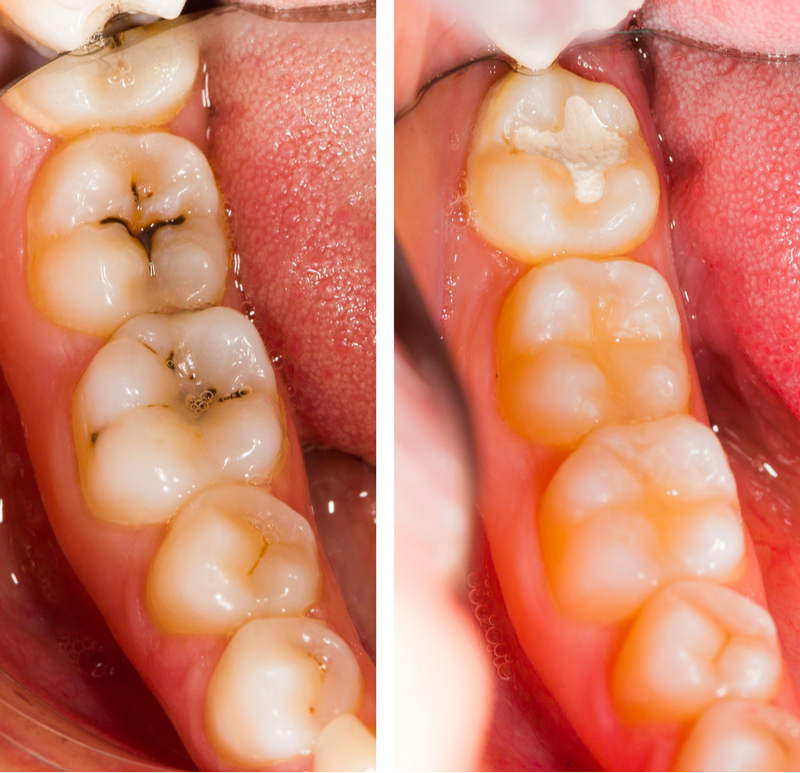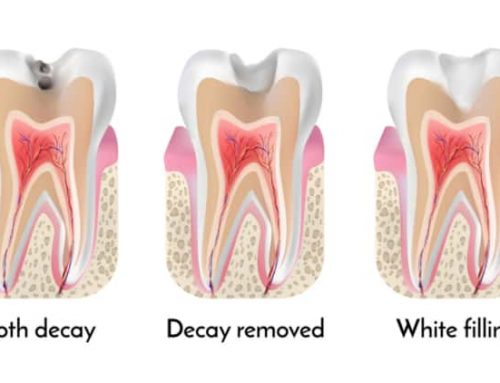At your Keller, TX dentist, Dr. Pickett removes decayed portions of teeth due to cavities and then must fill those holes with dental fillings. While filling material can vary, the most common filling options are the composite filling or amalgam filling. Of the most common fillings we use today at Pickett Family Dental is the composite dental fillings that have a much more natural appearance.
A composite filling is notably called a tooth colored filling, since the material used in the filling once placed can be matched to the same shade and color of your tooth. If the cavity isn’t severe, we typically recommend this type of filling. However, if more of the tooth has to be removed during the cleaning process, then an amalgam filling might be a better option. Composite fillings are great options for the front teeth because of their natural look and the tendency to help our patients smiles.

Composite Fillings: A More Natural Looking Solution to Cavities
Tooth decay doesn’t discriminate, affecting people of all ages. Composite fillings have emerged as an effective and visually pleasing solution to address cavities and restore teeth to their natural glory.
A tooth is more than just a functional entity; it’s an integral component of one’s smile, affecting confidence and overall oral health. When cavities strike, it’s essential to address them promptly to prevent further complications.
Why Choose Composite Dental Fillings?
- Aesthetic Appeal: Composite fillings are tooth-colored, blending seamlessly with the natural tooth structure.
- Safety: Being mercury-free, composite fillings offer a safer alternative to traditional amalgam fillings.
- Durability: They bond strongly with the tooth, reinforcing its structural integrity and ensuring a long-lasting solution.
Common Composite Dental Filling Questions
When can a composite dental filling be used for?
- Decayed tooth (i.e. cavity)
- Chipped or broken teeth
- Decreasing the gap between teeth
How it’s done
Dr. Pickett will numb the area where the filling is going to be placed prior to beginning any work on the affected tooth. Once the numbness is in full effect, Dr. Pickett will remove any and all decayed portions within the tooth. Once the decayed area is removed, he will place a substance to open the pores of the teeth to maximize the bond between the filling and the tooth, then hardened and cured using a special light. Once cleaned, Dr. Tyson Pickett, DDS FAGD will fill the cavity within the tooth using the composite filling in layers until complete
After the dentist numbs the area where the filling is going to be placed, he will remove any decayed portions. A substance is then applied to help open up the pores of your teeth for a stronger bond, and hardened and cured with a special light. Once complete, the filling is applied in thin layers to slowly form the complete filling. After the composite has hardened, the filling will be smoothened and polished to comfortably fit your bite.
How long do Composite Fillings last?
Composite fillings last about 6 years, which is half the time on average of an amalgam filling. This can vary depending upon use and dental healthcare habits.
How to Avoid Needing a Filling
Ultimately, the best dental filling is no dental filling. Prevention is the best medicine. You can dramatically decrease your risk of cavities and other dental diseases simply by:
- brushing your teeth twice a day with fluoride toothpaste
- flossing daily
- eating a balanced diet
- visiting the dentist regularly



